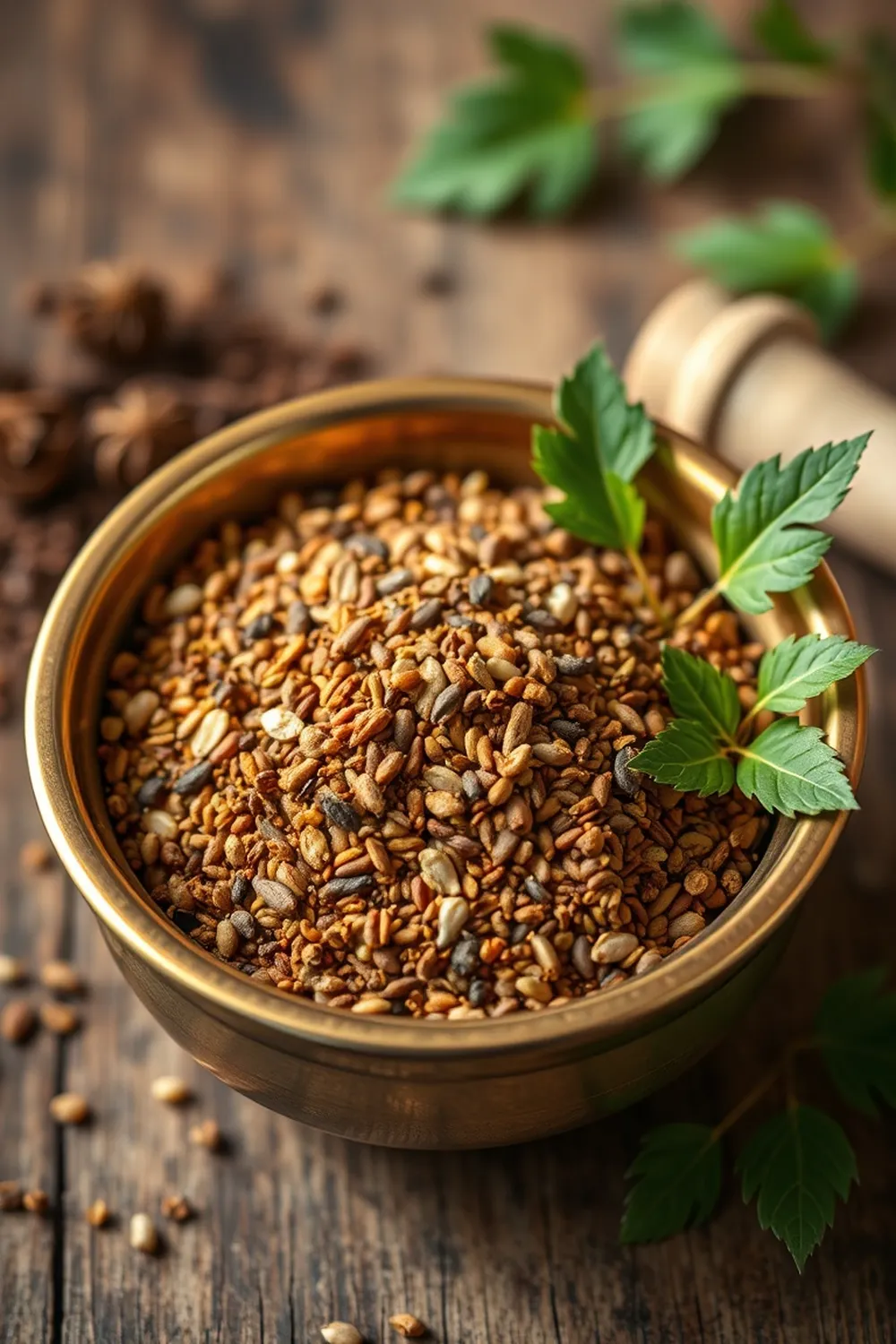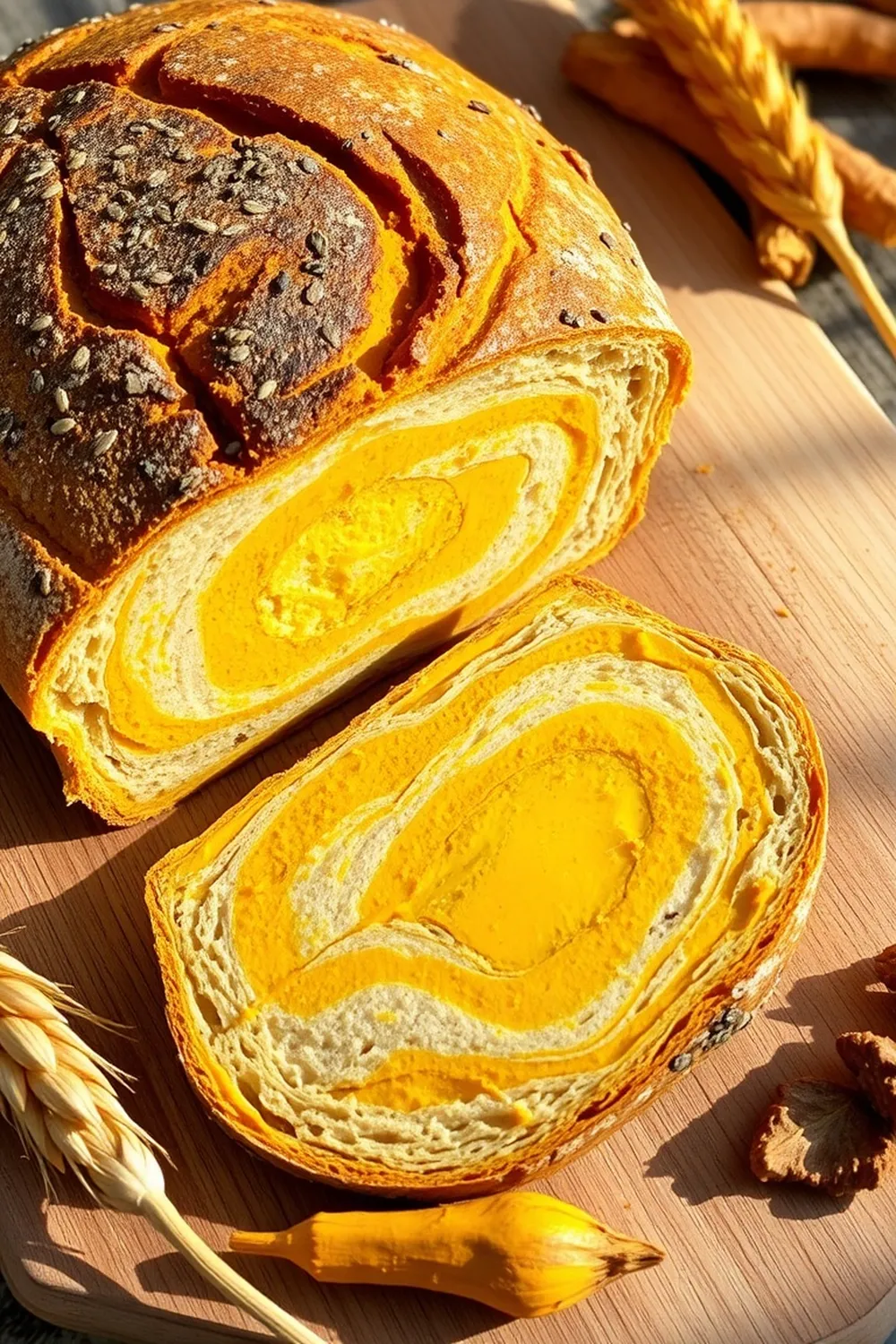- Lightly toast each spice individually in a dry pan over low heat for 1-2 minutes, until fragrant, to enhance their aroma.
- Allow spices to cool completely, then transfer them to an airtight jar.
- Close the lid tightly and shake vigorously to combine the spices evenly.
- Store in a cool, dry place and use as needed to elevate dals, vegetable dishes, or meat curries.
- Calories:20 kcal25%
- Energy:83 kJ22%
- Protein:1 g28%
- Carbohydrates:3 mg40%
- Sugar:mg8%
- Salt:2 g25%
- Fat:1 g20%
Last Updated on 5 months ago by Neha Deshmukh
Authentic Indian Spice Blend Recipe – Cumin, Fennel & Mustard Seeds
Hey everyone! I’m so excited to share this spice blend with you. It’s a little something I make whenever I want to instantly elevate a simple dish. Honestly, a good spice blend is everything in Indian cooking, and this one is a total game-changer. It’s a beautiful mix of earthy, aromatic, and slightly tangy flavors that just makes everything taste…better!
Why You’ll Love This Recipe
This isn’t just another spice blend; it’s a shortcut to incredible flavor. It’s incredibly easy to make – seriously, it takes just a few minutes. Plus, having this on hand means you can whip up a delicious Indian meal even on the busiest weeknights. Trust me, once you try it, you’ll wonder how you ever cooked without it!
Ingredients
Here’s what you’ll need to create this magic:
- 1 tbsp cumin seeds (approx. 10g)
- 1 tbsp fennel seeds (approx. 10g)
- 1 tbsp mustard seeds (approx. 12g)
- 1 tbsp nigella seeds (onion seeds) (approx. 8g)
- 1 tbsp fenugreek seeds (approx. 8g)
Ingredient Notes
Let’s talk about these little flavor bombs! Each seed brings something special to the party.
- Cumin Seeds (Jeera): These are a staple in Indian kitchens, offering a warm, earthy flavor. You’ll find them in everything from dals to curries, especially in North Indian cuisine.
- Fennel Seeds (Saunf): With their subtle anise-like sweetness, fennel seeds are fantastic for digestion. They’re often used as a mouth freshener after meals, and are popular in Bengali cuisine.
- Mustard Seeds (Rai): These tiny seeds pack a punch! Black mustard seeds are more common in North India, while South Indian cooking often uses brown or yellow mustard seeds. They add a lovely nutty, pungent flavor.
- Nigella Seeds (Kalonji/Onion Seeds): Don’t let the name fool you – these don’t actually taste like onions! They have a slightly bitter, peppery flavor and are often used to temper dals and vegetable dishes.
- Fenugreek Seeds (Methi): These have a slightly bitter, maple-like aroma. A little goes a long way! They’re commonly used in North Indian curries and pickles.
Step-By-Step Instructions
Alright, let’s get blending! It’s super simple, I promise.
- First, take a dry pan (no oil!) and set it over low heat. We’re going to gently roast each spice individually.
- Add the cumin seeds to the pan and roast for about a minute, until fragrant. Keep a close eye – we don’t want them to burn!
- Remove the cumin seeds and set them aside to cool. Repeat this process with the fennel seeds, mustard seeds, nigella seeds, and finally, the fenugreek seeds.
- Once all the spices are cooled completely, transfer them to an airtight jar.
- Close the lid tightly and give it a good shake! This ensures everything is nicely combined. And that’s it!
Expert Tips
Want to make sure your spice blend is perfect? Here are a few things I’ve learned over the years:
- Freshness is Key: Use the freshest spices you can find. They have a much more potent flavor.
- The Bloom: Roasting the spices releases their essential oils, giving you a much more flavorful blend. Don’t skip this step!
- Avoid Burning: Low and slow is the way to go. Burnt spices taste bitter and unpleasant.
Variations
Feel free to get creative! This blend is a great base to customize.
- Spice it Up: Add a pinch of red chili powder or a few dried red chilies for a little heat. My friend, Priya, always adds a tiny bit of cayenne pepper.
- Mustard Seed Swap: Experiment with different types of mustard seeds – black, brown, or yellow. They each have a slightly different flavor profile.
- Coriander Addition: A tablespoon of coriander seeds adds a lovely citrusy note. My mom always adds a little!
Serving Suggestions
So, what do you do with this amazing spice blend? So many things!
- Dals: A pinch of this blend transforms a simple lentil soup into something truly special.
- Vegetable Curries: Sprinkle it into your favorite vegetable curry for an extra layer of flavor.
- Meat Marinades: It’s fantastic in marinades for chicken, lamb, or fish.
- Potato Dishes: Trust me on this one – it’s incredible with potatoes!
Storage Instructions
To keep your spice blend fresh and flavorful:
- Store it in an airtight jar in a cool, dry, and dark place.
- It should stay good for about 6-12 months, but the flavor will start to diminish over time.
FAQs
Got questions? I’ve got answers!
How long will this spice blend stay fresh?
Around 6-12 months, if stored properly in an airtight container away from heat and light.
Can I grind the spices instead of using whole seeds?
You can, but whole seeds retain their flavor much longer. If you do grind them, use them quickly.
What is the best way to roast the spices without burning them?
Low heat and constant attention! Stir frequently and remove them from the heat as soon as they become fragrant.
Can this blend be used as a dry rub for meat?
Absolutely! It makes a fantastic dry rub for chicken, lamb, or fish.
Where can I source high-quality seeds?
Indian grocery stores are your best bet. You can also find them online from reputable spice retailers.










